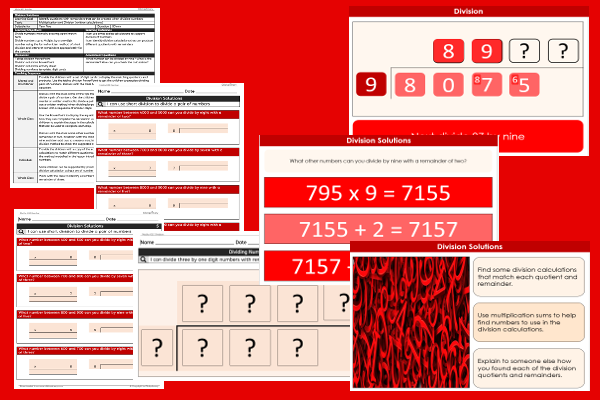Lesson Five – Division Solutions

This maths teaching pack for Key Stage Two gets the children to identify and record the correct matching quotients with remainders that can be created when dividing different pairs of four by one digit numbers.
The class can select and use multiplication calculations to help identify division sums that can produce each matching quotient with a specific remainder.
Download this teaching pack including a lesson plan, classroom activities and an interactive presentation to identify and record the correct matching quotients with remainders that can be created when dividing different pairs of four by one digit numbers
Activities in this teaching pack include a differentiated set of worksheets to select and record quotients with remainders that can be created when dividing four by one digit numbers using multiplication calculations to help identify the matching division sums.
The interactive presentation gets the children to explore the quotients with remainders that can be created when dividing four by one digit numbers.
This lesson is part of a maths scheme of work to get the children to practise using the short division method to solve problems when dividing four by one digit numbers including quotients with remainders and the use of rounding to express solutions. There are teaching activities for shared learning, differentiated worksheets to support independent learning and interactive presentations to introduce concepts and key skills.
-

Theme Park Visit
Practise identifying and calculating the timing and duration of rides and events when visiting a theme park on a special family trip
-

Family Holiday Trips
Identify and record how to compose and publish recounts using adverbials of time and place to describe family holidays to different places in the world
-

Money Multiplication
Explain and model how to use standard written calculation methods to multiply money amounts in pounds and pence when solving number problems
-

Sport Teams
Explain and model how to use brackets and dashes to add extra information to sentences describing how to play sports and games as part of a team
